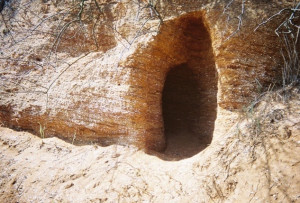
Online
Fortnightly Highlight 8: Radical Curiosity
–
Dear friends,
Earlier this year, whilst trying to comprehend the scale of the pandemic as it began to accelerate, everything seemed so impossibly large, immutable and intangible: the rising figures, the global spread, the eerie silence of the streets and skies.
Three months on, in the light of the present moment, this eighth edition of our Fortnightly Highlight looks back at The Showroom’s archive of exhibitions, research and events with a tone of radical curiosity informed and inspired by the collaborative work and writing of Anna Lowenhaupt Tsing. We are currently having perhaps some of the largest conversations we’ve ever had about the future of our species, requiring from us broader and deeper planetary thinking. The following selection of projects seeks to spark curiosity and imagination; and to open up new perspectives, new alternatives and new realities.
Specially available for the next two weeks is a magisterial audio-essay by the late Mark Fisher and Justin Barton which evokes a walk undertaken along the Suffolk coastline in 2006, from Felixstowe container port to the Anglo-Saxon burial ground at Sutton Hoo. In this twenty-two minute audio fragment of On Vanishing Land (2013, 45 minutes) shadowy incursions, dream-like states, the unknown and deep time form an epic work of narrative fact and fiction.
We invite you to read Ros Gray and Shela Sheikh’s introduction to their co-edited issue of Third Text, The Wretched Earth – Botanical Conflicts and Artistic Interventions; and to listen to a conversation held together with Elvira Dyangani Ose on the night of its launch at The Showroom in 2018. Also available to listen to again is Timothy Morton and Federico Campagna’s 2017 discussion about potential approaches to a redefinition of ecological thinking through ideas of Dark Ecology and magic. Finally, we revisit Christina Mackie’s 1999 exhibition IIP (Intron Image Project), asking how urgent questions around genetic modification posed by Mackie continue to resonate today.
Through these projects we invite you to dream; to continue to ask questions; and to remain radically curious.
Take care,
Elliot Anderson
ArtQuest Widening Participation Projects & Communications Intern, The Showroom
and
Lily Hall
Curator, The Showroom
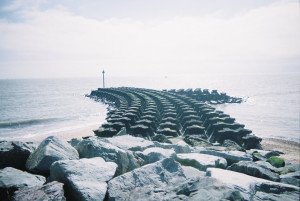
On Vanishing Land (2013, 45 minutes) is an audio-essay that evokes a walk undertaken by Mark Fisher and Justin Barton along the Suffolk coastline in 2006, from Felixstowe container port to the Anglo-Saxon burial ground at Sutton Hoo. The work consists of the abstract in the form of music and philosophy, setting out its spoken-word philosophical views using a range of expressive forms which include narrative and fiction. It opens up radical perspectives concerning the planet, time, capitalism, micropolitics and – not least – the waking of human faculties.
This work premiered at The Showroom in 2013, as part of an exhibition co-commissioned and produced by The Otolith Collective and The Showroom. On Vanishing Land was released as an album, on Hyperdub, in 2019.
LISTEN: The first half of On Vanishing Land was specially available to listen to in The Library for a limited period, from 24 July - 7 August as part of this edition of Fortnightly Highlights
LISTEN: Last December we held the first combined playback of audio essays On Vanishing Land and londonunderlondon by Mark Fisher and Justin Barton. A recording of the conversation between collaborators Barton, Dalia Neis and Pete Wiseman is available in The Library. They discuss the ideas and techniques involved in the composition of the work – as Barton describes, as a chance ‘to explore what might exist beyond the flood barrier of ordinary capitalist reality’
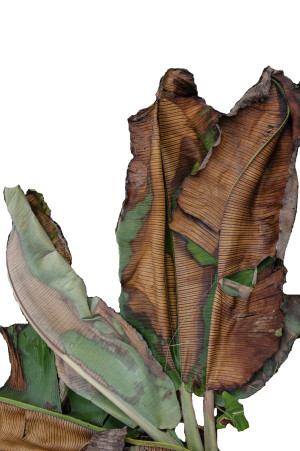
Third Text: The Wretched Earth – Botanical Conflicts and Artistic Interventions
Edited by Ros Gray and Shela Sheikh, this special issue of Third Text, The Wretched Earth – Botanical Conflicts and Artistic Interventions presents new research on contemporary art practices that both explore and intervene in the cultures, politics and systems of representation generated through human interaction with the soil. The phrase ‘the wretched earth’ signals an ongoing engagement with anti-colonial and anti-imperialist writers such as Franz Fanon, whilst emphasising a need to go beyond their reconfigured humanism to think about the multiple human and nonhuman cohabitations that constitute the soil and, more broadly, our more-than-human commons.
These questions inform recent developments in research led by Ros Gray on Art & Ecology at Goldsmiths, creating a context in which artists engage in meaningful and transformative ways with the most pressing ecological questions of our time; supporting the development of practices in diverse sites and scales dedicated to imagining and shaping liveable futures.
READ: The introduction to The Wretched Earth – Botanical Conflicts and Artistic Interventions by Ros Gray and Shela Sheikh is available to download from The Library.
LISTEN: A recording of the conversation between editors Ros Gray and Shela Sheikh chaired by The Showroom Director Elvira Dyangani Ose on the occasion of the launch event in November 2019.
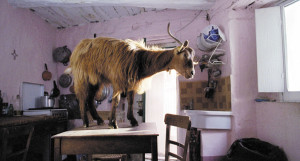
Timothy Morton and Federico Campagna: Underground / Ecology
Underground / Ecology / Politics / Mythology was a series of three multimedia events hosted between The Showroom and Goldsmiths in 2017, organised by Teodora Pasquinelli. This first event invited Timothy Morton and Federico Campagna to explore the meaning of ecology, understood as the ontological terrain underlying human and non-human forces. Morton and Campagna approached a redefinition of ecological thinking through the philosophical models of Dark Ecology and magic as systems that shape our visible and invisible environment.
WATCH: A video recording of Underground / Ecology with Timothy Morton and Federico Campagna is available to view in The Library.
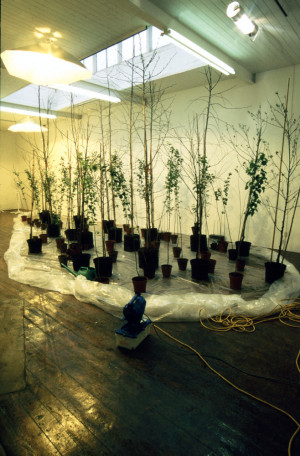
Christina Mackie: IIP
Christina Mackie’s 1999 exhibition IIP (Intron Image Project) at The Showroom – at Bonner Road and under the directorship of Kirsty Ogg – explored feelings of unease about the concept of genetic modification. The project was designed to raise questions that entangled the ethics of creating new life forms and artistic practice. Through this project Mackie asked, is it possible to make a creative genetic contribution to the world without passing on your own genes? Is it necessary to have an obvious benefit in mind when modifying the genetic pattern of a life form? What are the implications of using genetics to make art that has a life span beyond that of its creator? Can a work of art be invisible?
Twenty one years on, how do these questions continue to resonate? There have been significant advancements in genetic modification technologies as well as changing scientific and public opinion towards their use and ethical status. With the rise of new genome editing technologies, worsening climate change and the current global pandemic, how might we address these questions?
EXPLORE: Christina Mackie: IIP (Intron Image Project)
READ: Now available in The Library is a publication made on the occasion of IIP, and an article from MAKE Magazine (Edition 89, Autumn 2000) in which science fiction author Pat Cardigan responds to IIP.